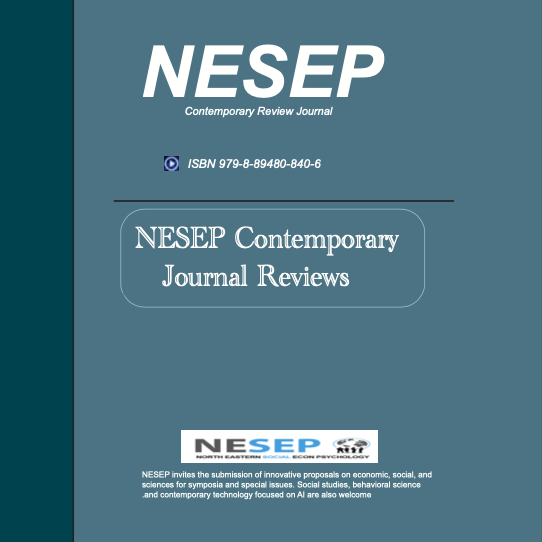Accepted Articles
We congratulate you on acceptance of your manuscript.

Annual Expo by the Journal of Young Explorers Meta and NESEP
- Fundamental or applied research
- Interdisciplinary research
- Judging on a rolling basis
- A work-in-progress research
- Completed research
- Unlimited topics and ideas
- ISBN 979-8-89480-840-6
- NESEP/NY-CSEF event at Harvard Club in NYC
Assessment of Lake Water Quality and Quantity Using Satellite Remote Sensing
Abstract:
Assessment of both water quality and quantity pose a great challenge to those studying the effects of anthropogenic activities on bodies of water. Eutrophication created by the increased concentration of nutrients including nitrates and phosphates has been known to contribute to the development of both toxic algal blooms, which serve as limiting factors in the ecosystems of the water, rendering it useless for consumption.1,2 Another common development is the buildup of suspended sediments (SS/TSS), contributing to the anoxic conditions characterizing environmental hypoxia.3 Because current methods for the assessment of the presence of such issues rely upon tedious and costly methods, a timely and cost-efficient method is desirable for application to the practice.4 This research relies upon analysis of the inherent optical properties of chlorophyll and sedimentation present within the bodies of water in question, achieved through analysis of the reflectance values of the red and blue bands from Landsat satellite images of five bodies of water. 5 The analysis, performed using Geographic Information System ArcMap, allows for determination of the values that attest to changes in surface area, turbidity, and eutrophication. The trends in the data hold consistency with the natural occurrences surrounding the bodies of water associated with the three parameters outlined above, supporting usage of remote sensing for qualitative and quantitative analysis of water.
Reference
[1] Smith, V., Tilman, G., & Nekola, J. (1999). Eutrophication:Impacts of excess nutrient inputs on freshwater, marine,andterrestrial ecosystems. Environmental Pollution,100( 1-3), 179-196. doi:10.1016/s0269-7491(99)00091-3 12
[2] Chislock, M.F.; Doster, E.; Zitomer, R.A.; Wilson, A.E. (2013)."Eutrophication: Causes, Consequences, and Controls in Aquatic Ecosystems". Nature Education Knowledge. 4 (4): 10. Retrieved 10 March 2018.
[3] Anderson, D. M., Glibert, P. M., & Burkholder, J. M. (2002). “Harmful algal blooms and eutrophication: Nutrient sources, composition, and consequences.” Estuaries,25(4), 704-726. doi:10.1007/bf02804901
[4] Bush et al. (2017). "Oxic-anoxic regime shifts mediated by feedbacks between biogeochemical processes and microbial community dynamics". nature. Bibcode:2017NatCo...8..789B. doi:10.1038/s41467-017-00912-x.
[5] Michaud, Joy P. (1994). "Measuring Total Suspended Solids and Turbidity in lakes and streams." Archived 2010-07-30 at the Wayback Machine. A Citizen's Guide to Understanding and Monitoring Lakes and Streams. State of Washington, Department of Ecology.
[6] Alesheikh, A. A., et al. “Coastline Change Detection Using Remote Sensing”. International Journal of Environmental Science & Technology, vol. 4, no. 1, Jan. 2007, pp. 61–66., doi:10.1007/bf03325962.
[7]Babin, M., Cullen, J., Roesler, C., Donaghay, P., Doucette, G., Kahru, M., . . . Sosik, H. (2005). New Approaches and Technologies for Observing Harmful Algal Blooms. Oceanography, 18(2), 210-227. doi:10.5670/oceanog.2005.55 [8] Stony, J., & Scaramuzza, P. (n.d.). LANDSAT 7 SCAN LINE CORRECTOR-OFF GAP-FILLED PRODUCT DEVELOPMENT.